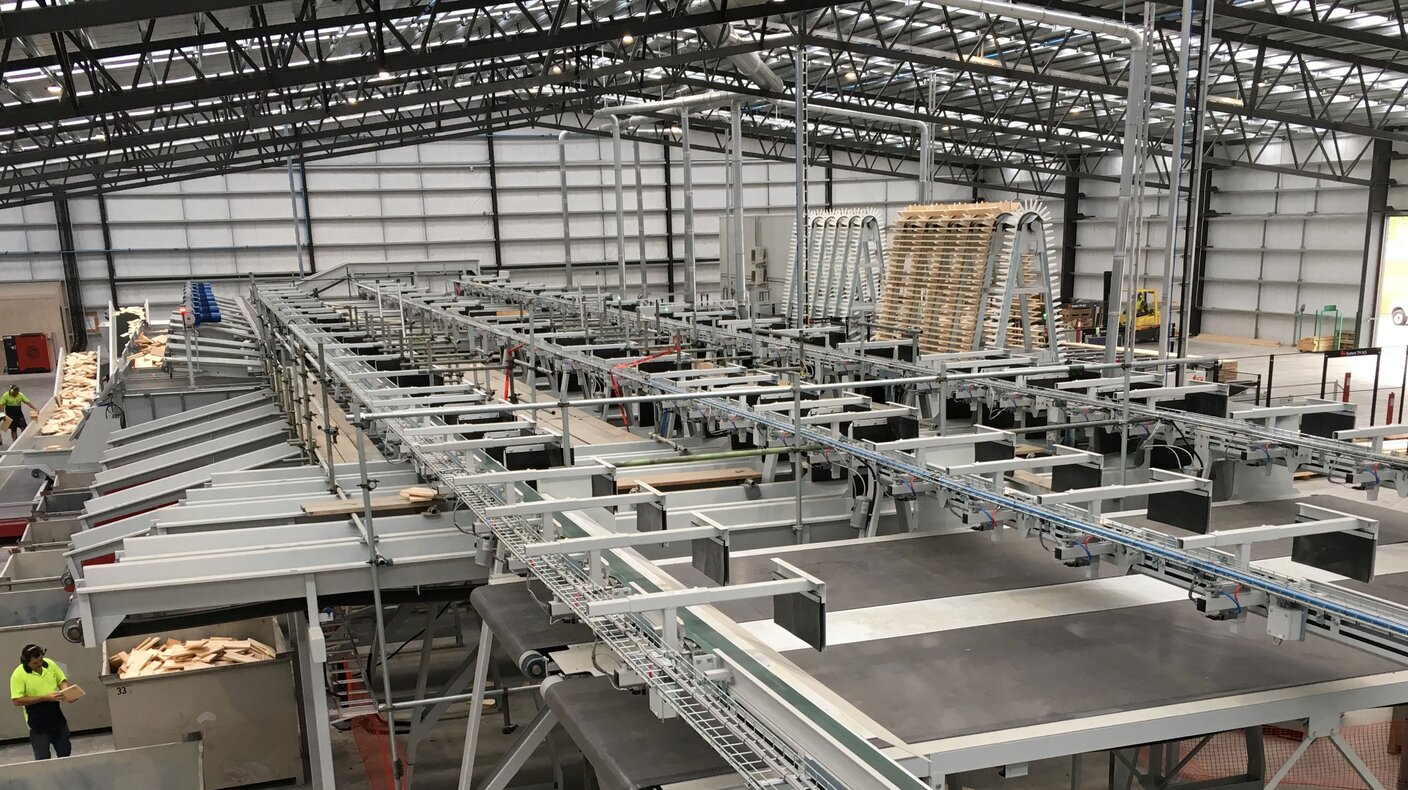Cross-cut and finger-jointing line in New Zealand

Fully integrated cross-cut and finger-jointing line in New Zealand
When Ross Richardson, Managing Director of Niagara Sawmilling Company Ltd. decided to upgrade his factory’s equipment due to growing market demand, his thoughts turned to System TM, MiCROTEC and local dealer Southern Cross Engineering to explore how Niagara could maximize its production. The outcome was a new extensive cross-cut and finger-jointing line with much to offer in terms of yield and optimization.
From defect to perfect in one system
Initially, package feeding occurs using a tilt hoist that places two packs on top of each other. Then, workpieces are fed at up to 60 workpieces/minute into a 250-meter Ledinek planer with 4 spindles. Next, workpieces are examined by a MiCROTEC Warpscan deformity scanner that measures bow, twist, and crook. A MiCROTEC Endscan scanner further looks at the boards' annual rings to identify the wood pith on workpieces.
A MiCROTEC moisture meter M3 Scan determines the moisture content of workpieces before they are scanned on all four sides by a Goldeneye 500 Multi-Sensor Quality Scanner featuring an X-ray unit. The Goldeneye optimizer software than calculates the best cutting position for both cross-cut as well as rip optimization. This data is used by three Opti-Kap 5103 cross-cut saws that follow. As workpieces enter the cross-cut saws, the optimizing software program instructs the saws how to cut workpieces for maximum wood utilization.
Workpieces exit the cross-cut saws onto three sorting belt conveyors, giving Niagara three sorting options: one for re-rip blocks, one for finger jointing blocks, and one for long fixed lengths. Finger jointing blocks are cut into various short lengths and stored in bins where eight outfeed walking floor bins are filled with different wood qualities. Once the outfeed walking floors are emptied, workpieces are either processed by a horizontal Opti-Joint H-200 or a vertical Opti-Joint V-8 finger jointing machine.
Niagara’s strategy = more money in the pocket
The true cost of waste is not simply the cost of discarded materials, it also encompasses inefficient use of raw materials. Niagara puts money in its pocket by employing an effective waste and resource management strategy focusing on sustainable plantation-grown radiata pine and whole-tree utilization. Reject wood is chipped, creating an ‘'eco'’ woodfuel for new low emission boilers. Bark and sawdust are blended with peat to produce composts and mulch. Finally, shavings and sawdust are used to generate energy to run Niagara’s kilns. As a result, Niagara profits both from the economic and environmental benefits of waste reduction.













